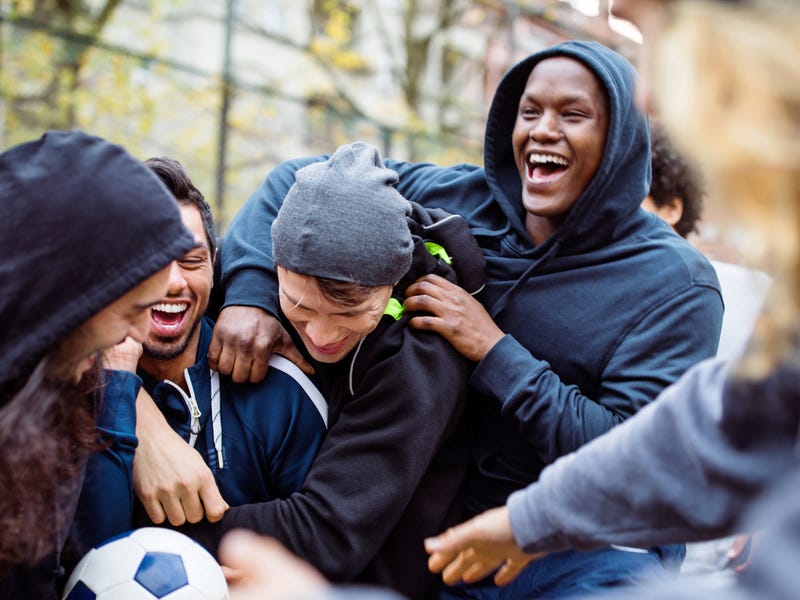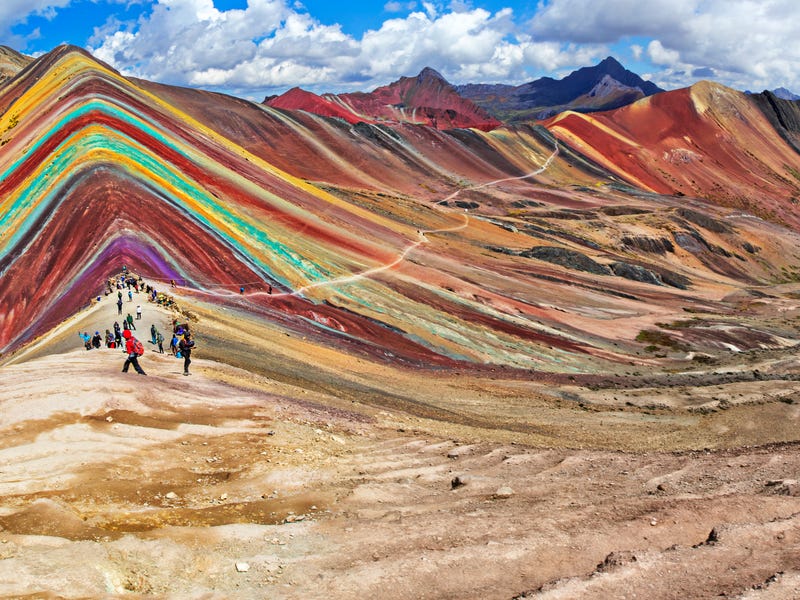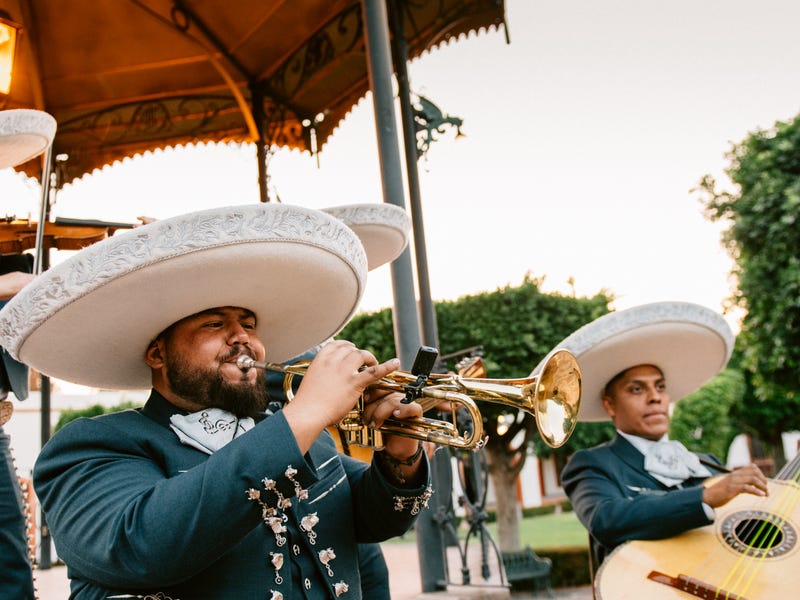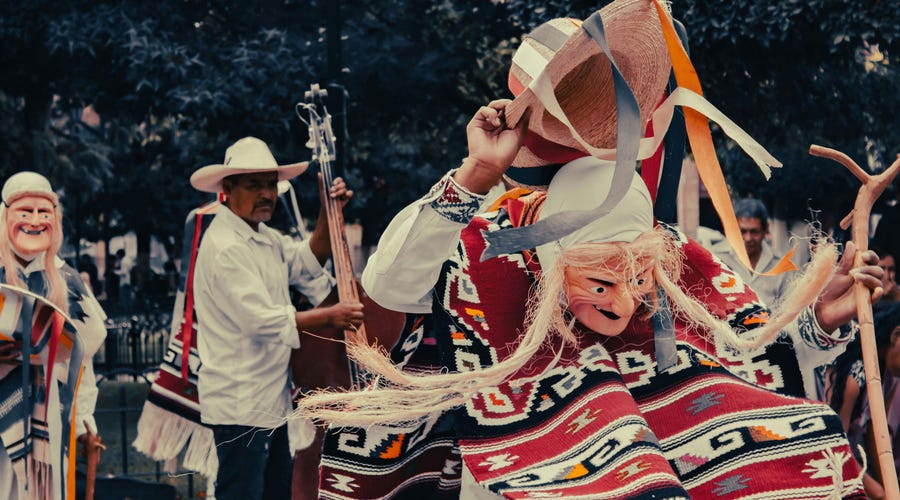
Mexican culture: A giant guide to heritage, people, arts & more

Author
One of the best parts of learning Spanish is being able to have a much deeper appreciation for Mexican culture.
Learning a new language is so much more than just learning vocabulary and grammar. In order to fully understand how to speak Spanish, you will also need to be familiar with the local culture, customs, and traditions.
This is one of the most exciting parts of learning a new language, as you will acquire a new lens through which you can see life. No matter where you’re from, learning about culture in Mexico will allow you to glimpse into the everyday lives of Mexican people and their way of seeing the world.
In this guide, we’ll cover some of the most important parts of Mexican culture, including its history, cuisine, traditions, art, and more, so you can walk away with a clear picture of it.
Geographical and cultural diversity of Mexican culture
To begin understanding Mexican culture, you first need to understand the vastness and geographical diversity of the country. What’s the first thing that comes to mind when you think of a Mexican landscape? Perhaps it’s a paradisiacal beach or maybe an arid desert. However, Mexico also has lush forests, frigid mountains, deep rainforests, fiery volcanoes, snowy mountains, and so much more. After all, Mexico is the 14th largest country by land area, with 761,600 square miles of territory, or just shy of two million square kilometers.
This geographic diversity is reflected in Mexican society. Mexico has cosmopolitan urban centers, idyllic beach towns, and many other geographical formations, so not all Mexicans experience the country in the same way. Let’s take a look at how these regional differences impact culture.
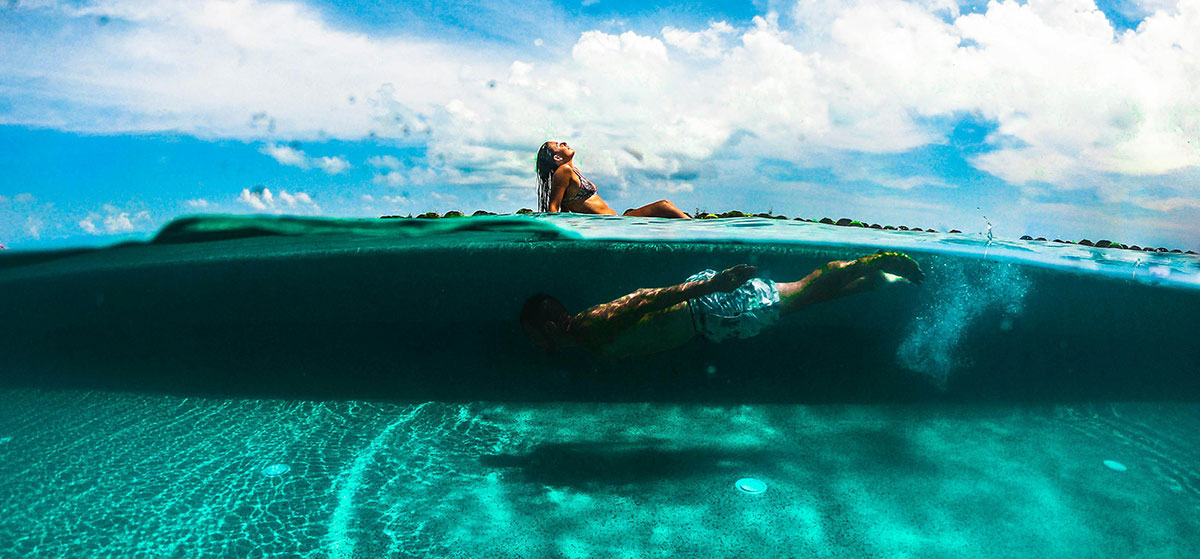
Regional differences and their cultural impact
With 32 states, it’s safe to say that Mexico has many distinct regional cultures. Going into each regional culture would not only merit its own article but may actually be an impossible task as regional cultures often blend into each other. However, there’s one major regional difference all Mexicans can agree on: the North-South divide.
The North-South divide splits Mexico geographically roughly down the middle along its horizontal axis. These are rough generalizations, but the following table shows some of the differences between Northern Mexicans and Southern Mexicans:
| Northern Mexico | Southern Mexico | |
| Tortillas | Flour | Corn |
| Chilies | Verde | Serrano |
| Music | Banda | Mariachi |
| Demographics | More European ancestry | Less European ancestry |
| Accent | Cantadito (“singsongy”) and loud | Standard Mexican |
| Climate | Hot and dry | Temperate and rainy |
| Work culture | High-stress | Relaxed |
| Architecture | Modern | Colonial |
| Most popular sport | Baseball | Soccer |
Urban vs. rural lifestyles
If you visit places like Mexico City, Monterrey or Guadalajara, you might think that Mexico is full of glitzy cosmopolitan cities with super-tall skyscrapers. However, Mexico has both large cities and rural towns. In fact, 21% of Mexicans live in rural communities, which means almost 30 million people inhabit Mexico’s most remote mountains, deserts, jungles, and forests.
City life is very similar to many other cities in the world. In Mexico City, millions of people take the Metro every day to move around the city, which is North America's second-busiest rapid transit system, right behind the New York City Subway. On the other hand, people who live in rural communities have little to no infrastructure, and kids often have to walk miles just to get to the nearest school.

Indigenous influences on local traditions
Mexico is a multicultural country with dozens of unique indigenous groups. In fact, the Mexican Constitution defines Mexico as a “pluricultural nation” as a way to emphasize the country’s ethnic diversity. However, the Mexican census stopped gathering data on ethnicities in the 1930s, so there are disputed figures on the actual breakdown of ethnicities in Mexico.
To understand the indigenous influences of Mexico, you must first understand the term “mestizo.” This term was used to describe those of mixed European and Indigenous ancestry, although it is rarely used outside academic circles today. As a rule of thumb, Mexico’s population consists of around 70% mestizos — people who share varying degrees of both European and indigenous ancestry — plus around 10% indigenous, 10% European, and 10% afrodescendant and Asian.
Historical significance of Mexican culture
Mexican history is extremely rich, dating back to ancient civilizations from thousands of years ago. The Spanish conquest in the 16th century introduced European cultural elements, creating a unique blend of indigenous and Spanish influences that define Mexico today. The country’s cultural heritage, from the majestic pyramids of Teotihuacan to the Baroque churches of its colonial cities and the revolutionary murals of Diego Rivera, tells the story of a people’s struggle and resilience.
Ancient civilizations: Aztecs, Maya, and others
Ancient Mexico was the home of some of the world’s most fascinating civilizations, including the Aztecs and the Maya, alongside others like the Olmecs, Toltecs, and Zapotecs. These societies were renowned for their monumental architecture, complex calendars, and significant advances in math and astronomy. Here is a quick overview of some of Mexico’s most noteworthy ancient civilizations:
Olmecs - 1400 to 400 BCE
Location: Southeastern Mexico, mostly Veracruz and Tabasco.
Language: Unknown, as no written traces were left behind.
Famous for its huge stone heads, showing impressive artistry and believed to depict ancient rulers. Often called the “Mother Culture” of Mesoamerica, the Olmecs laid the groundwork for future societies like the Maya and the Aztec, introducing urban planning, agriculture, and fun activities like the Mesoamerican ballgame, which is considered to be the world’s earliest ball game.
Teotihuacan - 100 BCE to 750 CE
Location: North of present-day Mexico City.
Language: Unknown.
Teotihuacan was an ancient metropolis known for its vast and orderly grid layout and monumental structures, like the Pyramid of the Sun and the Pyramid of the Moon. It was one of the largest cities in the world at its peak, influencing Mesoamerican culture and politics beyond its valley. The mystery of who built it adds to the allure, as it was already ancient when the Aztecs named it “the place where gods were born.”
Toltec - 900 to 1150 CE
Location: Tula, in the present-day state of Hidalgo.
Language: Nahuatl.
They are known for their outstanding warrior culture and significant contributions to Mesoamerican art, notably their capital, Tula. They’re often credited with influencing the cultural and religious life of subsequent civilizations, including the Aztecs, who regarded the Toltecs as their intellectual predecessors. Their legacy includes the introduction of the feathered serpent deity, Quetzalcoatl, who played a central role in the pantheon of later Mesoamerican societies.
Zapotec - 500 BCE to 750 CE
Location: Principalmente en el Valle de Oaxaca.
Language: Lenguas zapotecas.
The Zapotecs, known for their engineering and architectural feats, built Monte Albán, one of the earliest cities of Mesoamerica, which was strategically located on a mountaintop overlooking the Valley of Oaxaca. They are known for their early use of a writing system and the development of a calendar system, showing sophisticated knowledge of astronomy and timekeeping.
Maya - 2000 BCE to 16th century CE
Location: Spans most of the Yucatán peninsula as well as parts of Chiapas, Guatemala, Belize, Honduras, and El Salvador.
Language: Mayan languages.
They are known for their unparalleled achievements in writing, astronomy, and calendar development, including the creation of one of the few fully developed writing systems in the pre-Columbian Americas. They built majestic cities like Tikal in Guatemala and Chichen Itza in Mexico, which is one of the New 7 Wonders of the World! The Maya civilization never disappeared, as many descendants still live in the region today, maintaining their linguistic and cultural heritage.
Aztec - 1345 to 1521 CE
Location: Valley of Mexico, particularly in Lake Texcoco in present-day Mexico City.
Language: Nahuatl.
They were known for their powerful military and complex religious practices. They built the city of Tenochtitlan, which was built on top of Lake Texcoco and featured grand temples, bustling markets, and intricate canals. In fact, the coat of arms of Mexico reflects the legend that founded Tenochtitlan, where the gods told the Aztecs to establish their city where they found an eagle perched on a nopal cactus, devouring a serpent. As this happened on a small island in the middle of the lake, they had to build a city that was mostly water-borne!
Mixtec - 900 to 1521 CE
Location: Primarily Oaxaca and parts of Guerrero and Puebla.
Language: Mixtecan languages.
They were celebrated for their exceptional craftsmanship in gold and their production of colorful picture books. They were skilled artisans and traders who created a vibrant culture noted for its achievements in astronomy, the calendar system, and unique hieroglyphic writing. Their society was composed of city-states, each with its own rules, which led to many local histories and alliances.
Chichimec
Location: Northern Mexico, particularly in the arid regions of the Mexican Plateau.
Language: Unknown.
They were a group of nomadic or semi-nomadic peoples that inhabited the Northern Mexican plateau before the rise of the Aztec Empire. Historically depicted as hunters and gatherers, the Chichimecs played a critical role in the development of Mesoamerican culture, particularly in the migration and cultural exchange that shaped the late pre-Columbian era.
Spanish colonial period and its lasting effects
The Spanish colonial period began after the fall of the Aztec Empire in 1521 and ended after the Mexican Independence movement in 1821, making it three centuries of continuous Spanish rule over Mexico. During this period, Mexico was known as the Viceroyalty of New Spain and ruled over a much larger territory, including much of the Southwestern United States, Central America, parts of Venezuela, Cuba, and even the Philippines. This vast territory was rich in resources like silver, which the Spanish mined and shipped back to Spain, setting up the colonial economy that characterized much of the 15th through 19th centuries.
Politically, colonial Mexico had a very tight hierarchy that placed people in the following categories:
- Peninsulares: This was the Spanish-born nobility, who were at the top of the social and political system.
- Criollos: They were people of Spanish descent who were born in the colonies. They enjoyed certain rights and privileges, but not as many as the peninsulares.
- Indigenous peoples: They were ostracized and lacked rights.
- African slaves: Although not to the same level as British colonies, Spanish colonies like New Spain used African slave labor.
The Spanish crown ruled the colony through a viceroy, who governed in the king’s name from Mexico City, the capital of New Spain. This period was characterized by trying to convert the indigenous peoples to Christianity, establishing missions and ranches, and creating major urban centers. Despite the oppressive colonial system, cultural exchange between Europeans and the indigenous communities flourished, leading to a unique blend of traditions that continue to influence Mexican culture today.
Cultural amalgamation over the centuries
If you spend a week in Spain followed by a week in Mexico, you’ll notice that these two countries share much more than just a language. Mexican culture today is a mix of indigenous and Spanish influences, which you can see in many ways:
- Cuisine: Mexican cuisine combines native ingredients like corn, chili, and chocolate with Spanish imports like dairy and wheat, creating distinctive dishes like mole and flavorful cheeses like Cotija and Oaxaca.
- Architecture: Mexico blends pre-Columbian structures with colonial-era churches, plazas, and urban planning principles like city grids, reflecting a unique style that matches the two distinct traditions.
- Celebrations: Celebrations like the Day of the Dead epitomize this cultural fusion, mixing indigenous ancestor worship with Catholic traditions to create a uniquely Mexican event.
- Language: The Spanish spoken in Mexico incorporates some words from Nahuatl, like chocolate, chancla (slipper), and aguacate (avocado).
Mexican art and architecture
Art plays a key role in Mexico’s national identity, with artists like Diego Rivera and José Clemente Orozco using murals to explore Mexico’s social and political narratives. Along with muralism, Mexican handicrafts, or artesanías (are-teh-sah-nee-as), represent Mexico by showcasing its history, culture, and traditions through pottery, textiles, and figurines.
On the architectural front, Mexico is known for its ancient pyramids and colonial-era buildings, which showcase the country’s historical depth. Modern Mexican architects like Luis Barragán have further solidified Mexico’s status as an architectural pioneer by integrating traditional elements with uniquely modern design principles.

Significance of Mexican muralism
They say all art is political, and there is no better example of this than Mexican muralism. It emerged as a powerful artistic movement in the early 20th century, unifying the nation and redefining Mexican identity following the Mexican Revolution. Muralism was revolutionary because of how easily accessible it was to the public, as opposed to paintings or sculptures that typically hid behind museum walls.
Diego Rivera, the most prominent figure of this movement, played a pivotal role in using public spaces to narrate social, political, and historical stories. His murals in key locations in Mexico and the United States are celebrated for depicting people’s struggles and achievements, highlighting themes of revolution, class struggle, and human rights. His legacy extends beyond his murals, influencing generations of artists worldwide. His techniques, themes, and commitment to social values made him an enduring figure in the art world and inspired artists to use their work as a tool for social change and cultural expression.
Traditional handicrafts and their cultural importance
Handicrafts, known as artesanías, encompass various materials and techniques, from pottery and textiles to metalwork and woodcarving. They’re vibrant representations of Mexico’s rich cultural heritage and diversity. These crafts aren’t merely decorative items; they carry deep cultural significance and embody centuries of tradition. Each region in Mexico is known for specific crafts that reflect its unique history. For example, the intricate silver jewelry of Taxco, the colorful woven textiles of Oaxaca, and the pottery of Puebla’s talavera.
The cultural importance of these artesanías extends beyond their aesthetic value, as they play a crucial role in sustaining local economies and preserving traditional lifestyles in the face of globalization. Artisans and their communities rely on producing and selling these items for their livelihood, making artesanías a vital link between Mexico’s past and its present-day economy. Furthermore, Mexican handicrafts have become famous worldwide for their quality and beauty, drawing tourists and collectors and fostering a global appreciation for Mexico’s cultural richness.
Architectural marvels and historical landmarks
Mexico has countless architectural marvels that are worth seeing when you visit. From pre-Columbian to modern structures, Mexico’s diverse architectural heritage includes marvels like:
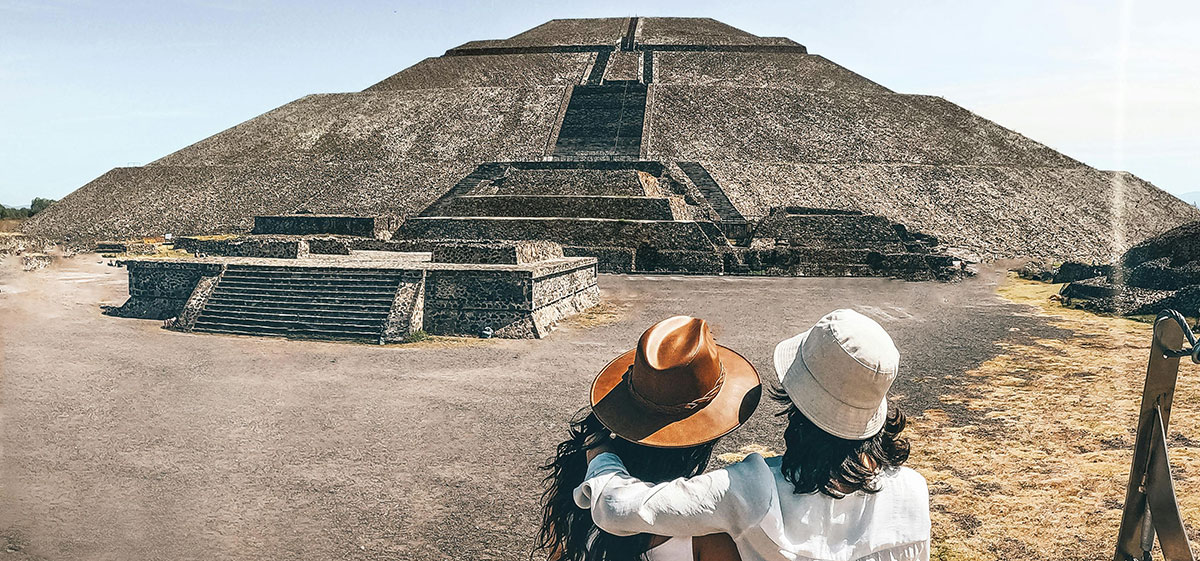
- Pyramid of the Sun: One of the largest pyramids in Mesoamerica, this ancient structure is part of a ceremonial center within the city of Teotihuacan, a UNESCO World Heritage Site, symbolizing the city’s significance in pre-Columbian times. The Pyramid of the Sun is located about an hour’s drive north of Mexico City.
- Palacio de Bellas Artes: This Mexico City staple is an iconic example of Mexican art nouveau and art deco styles. It hosts some of Mexico’s most important performances and exhibitions.
- Chichen Itza: Another UNESCO World Heritage Site, this ancient Mayan city hosts the Kukulkan Pyramid, which, on top of being a beautiful building to behold, actually serves as a physical calendar. Each of the four sides of the pyramid has 91 steps, which, along with the final step at the top, total 365 — the number of days in the solar year. During the spring and autumn equinoxes, the setting sun casts shadows on the pyramid steps, creating the illusion of a serpent representing the god K’uk’ulkan.
- Monte Albán: Yet another UNESCO World Heritage Site, this former Zapotec capital is notable for its terraces, dams, canals, pyramids, and artificial mounds. It was strategically built on a mountaintop with panoramic views. There, you’ll find a unique series of rock carvings known as the Danzantes, depicting captured warriors' stories.
- Castillo de Chapultepec: This historic castle in the heart of Mexico City’s Chapultepec Park has served various purposes, including a military academy, imperial residence, and presidential home. Now, it houses the National Museum of History and offers stunning views of Mexico City. Its architecture blends neoclassical and baroque styles and is a testament to Mexico’s rich history. Fun fact: this is the only royal castle in the Americas, so brush up your royal vocabulary!
Diversity of cuisine in Mexico
When you think of Mexican cuisine, the first things that come to mind are probably tacos, burritos, and guacamole. However, Mexican cuisine is incredibly diverse thanks to the country’s rich cultural heritage and varied geography. From the fresh seafood dishes of the coastal regions to the hearty stews and meats of the inland areas, each corner of Mexico has its own distinct flavor. This unique blend earned Mexican cuisine a spot on UNESCO’s Intangible Cultural Heritage of Humanity list, making it the first UNESCO-protected cuisine in the world.

The big picture of Mexican cuisine
Mexican cuisine tells a story of creativity and tradition, showing off a wide array of flavors that change from one region to another. It’s more than just food — it’s a celebration of Mexico’s natural diversity and its people’s ability to create delicious dishes from local ingredients. The centrality of cuisine to Mexican culture is one of the main themes of Laura Esquivel’s Como Agua Para Chocolate, one of the most iconic Mexican novels of the 20th century.
You can taste this intense cultural tradition in dishes like Chiles en Nogada, which were created by nuns in Puebla in 1821 after the signing of Mexico’s Treaty of Independence. This dish proudly displays the colors of the Mexican flag — green, white, and red — as a celebration of Mexico’s independence, which is why you’ll find it everywhere in the country in August and September. This dish truly embodies the Mexican passion for cuisine – I mean, what other country puts its flag on a national dish to celebrate its independence?
Regional variations in dishes
Mexican cuisine varies drastically from region to region, as each area offers dishes that reflect its unique climate and cultural heritage. In the hot and dry north, beef and goat dishes like carne asada and birria are very popular, while seafood dominates coastal areas with dishes like ceviche and aguachile. The central region is famous for its complex sauces, like mole poblano, which is a rich blend of chili peppers, spices, and chocolate. The Yucatán Peninsula is known for its Mayan dishes like cochinita pibil, which is shredded pork marinated in citrus juice and achiote. This regional diversity not only highlights the varied ingredients and flavors across Mexico but also tells the story of the country’s rich cultural heritage through food.
Iconic ingredients and their cultural significance
Mexican cuisine stands out for its explosive flavors, thanks to its extensive use of local ingredients. If there were a maximalist cuisine, then Mexican would surely be it. While there are thousands and thousands of unique Mexican ingredients, we’ll take a look at just five of the most important below:
- Maíz (corn): The cornerstone of Mexican cuisine, corn has been cultivated and revered in Mexico for thousands of years. It serves as the base for tortillas, tamales, and pozole. It symbolizes sustenance and life itself in many indigenous cultures.
- Chiles (chili peppers): As anyone who’s had Mexican food before can attest, we like our food to have a spice kick. Chiles are essential for bringing the heat, so they’re deeply ingrained in culture. Varieties like jalapeño, serrano, and habanero are popular choices for spicing up dishes.
- Aguacate (Avocado): Prized by the Aztecs and rediscovered by avo toast lovers around the world, this green fruit is deeply ingrained in Mexican cuisine. From guacamole to taco and salad toppings, avocado is used in all kinds of dishes to enhance their flavor.
- Cacao: Did you know that chocolate originated in Mexico? Well, not chocolate as we know it today, but rather its raw form: cacao. Ancient cultures in Mexico considered cacao a gift from the gods and used it as currency and in rituals.
- Frijoles (beans): Beans have been a staple of Mexican cuisine for millennia. They’re versatile and nutritious ingredients, present in dishes like refried beans and traditional bean soup.
Celebrations and festivals in Mexico
If you’re not from Mexico, you might think there is an unreasonable number of celebrations and festivals. Almost every other day is a special occasion, from historic events to religious holidays. Even honoring the dead involves a celebration, as with Día de los Muertos (Day of the Dead). This unique festival blends indigenous beliefs with Catholic traditions, honoring deceased loved ones with colorful altars, marigold flowers, sugar skulls, and lots of food. The idea is, if your loved ones were able to come back from the dead for a day, you’d surely want to throw a party and celebrate, right? So, set up an altar with all their favorite food and drinks, and start celebrating! In short, Mexican traditions are all about finding excuses to throw a party!
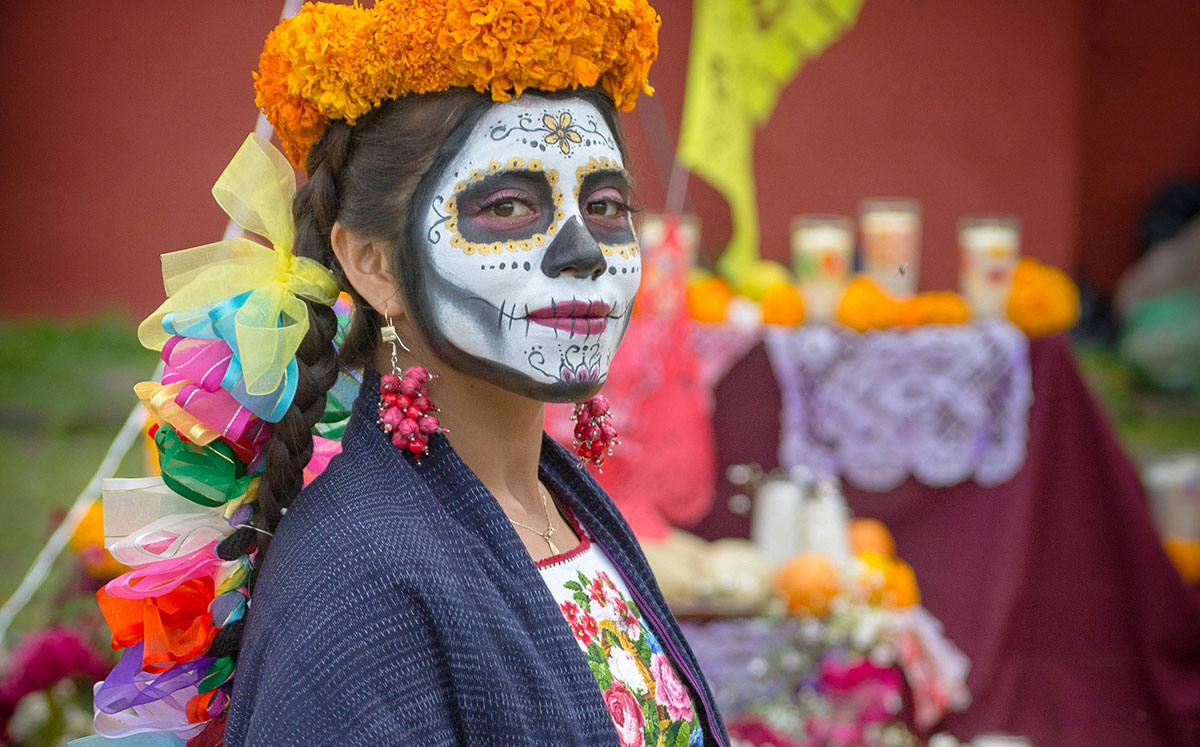
Mexican music and dance
Mexican music and dances are as diverse as the country’s landscape, with each region offering its own unique sound and style. In the North, you’ll find lively rhythms of banda, norteño, and corridos. These styles feature instruments like the accordion and bajo sexto, reflecting the cultural fusion of Mexican and European influences. Meanwhile, the coastal regions are known for the romantic sounds of mariachi and ranchera music, with their iconic trumpets, violins, and guitars serenading listeners with tales of Mexican heritage and heartache.
Indigenous music and dances remain prominent in the south, especially in states like Oaxaca and Chiapas. The marimba plays a central role here, accompanied by traditional dances that often involve elaborate costumes and communal participation. Across all these regions, music and dance aren’t just entertainment — they’re vital expressions of identity, history, and communal spirit, bringing people together to celebrate their joys, sorrows, and cultural milestones.
Mariachi music and its cultural roots
Mariachi music is a quintessential element of Mexican culture, originating in the 18th century in the western regions of Mexico, particularly in Jalisco. Characterized by its vibrant blend of stringed instruments, trumpets, and powerful vocals, mariachi bands perform a wide repertoire, including traditional, ballad, and modern songs. The music is generally deeply emotional, often touching on themes of love, nationalism, and nature. The traditional mariachi ensemble includes violins, trumpets, a vihuela, a guitar, and a guitarrón, creating a rich sound synonymous with the Mexican national identity.
Mariachi’s cultural roots are deeply intertwined with Mexican celebrations and social gatherings, from weddings and birthdays to religious events and national holidays. The presence of a mariachi band brings a sense of festivity and pride, elevating any occasion with their charro outfits and engaging performance. Over time, mariachi has gained international recognition, symbolizing Mexican culture worldwide. UNESCO has even declared it an Intangible Cultural Heritage, acknowledging its role in fostering social cohesion and cultural heritage across generations.
If you want to see firsthand just how powerful mariachi music can be, then take a look at the music video for Luis Miguel’s “México en la Piel,” one of the most iconic mariachi songs that can only be described as a love song to Mexico and the pride of being Mexican:
Traditional folk dances and their symbolism
Mexican traditional folk dances are vibrant expressions of each region’s cultural heritage. Some notable examples are:
| English | Spanish | Region | Description |
| Mexican Hot Dance | Jarabe Tapatío | Jalisco | Considered the national dance of Mexico, it symbolizes courtship with the man performing around a sombrero, which the woman eventually picks up as a sign of acceptance. |
| Dance of the Little Old Men | Danza de los Viejitos | Michoacán | Performed by dancers wearing masks of old men, this dance is a satirical representation of the elderly, symbolizing the wisdom and joy that come with age. |
| Deer Dance | La Danza del Venado | Sonora | This dance represents the relationship between humans and nature, specifically the hunting process, showcasing respect for the animal kingdom and the cycle of life. |
| The Flying Men | Los Voladores de Papantla | Veracruz | Originating from a ritual to ask the gods to end a severe drought, performers climb onto a pole and “fly” around it as they dangle from it from ropes, symbolizing the link between the earth and the divine. |
| Dance of the Devils | La Danza de los Diablos | Guerrero | Stemming from the Afro-Mexican community, this dance symbolizes the rebellion against colonial oppression, with the devils representing the Spanish conquerors. |
Contemporary music scene and global influences
Mexico’s contemporary music scene is a vibrant blend of traditional sounds and modern influences, reflecting the country’s ability to evolve while staying rooted in its rich cultural heritage. Genres like pop, rock, and hip-hop have found a fervent audience among the Mexican youth, with artists and bands mixing elements of traditional Mexican music to create something unique. Bands like Café Tacvba and Molotov have gained international acclaim by mixing rock with folkloric tunes, while pop stars like Thalia and Paulina Rubio have gained international fame by incorporating regional sounds into their music.
Mexican artists have had a significant impact around the world, bringing Mexico’s unique blend of sounds to far-away audiences. The rise of reggaeton and Latin trap worldwide has opened many doors for new Mexican artists. Peso Pluma has recently been topping Spotify charts, with his song “Ella Baila Sola” becoming the first regional Mexican song to reach the top 10 of the Billboard Hot 100.
Religious influences in Mexican culture
Religious influences run deep in Mexican culture, as over 70% of the population identifies as Catholic. The Spanish originally introduced this religion during the colonial period, when it was blended with pre-Hispanic beliefs and religious systems. Catholic saints are venerated alongside indigenous deities in some regions, showcasing just how intertwined these European and pre-Hispanic beliefs are in Mexico. The Virgin of Guadalupe, for example, is an emblematic figure who represents this blend, being both a Catholic icon and a symbol of Mexican identity. Some believe the Virgin of Guadalupe embodies aspects of the indigenous goddess Tonantzin.
Festivals and celebrations throughout the year showcase the depth of religious influence in Mexican society. The Day of the Dead, a UNESCO Intangible Cultural Heritage, exemplifies this as it blends indigenous Aztec traditions with the Catholic All Souls’ and All Saints’ Days, creating a unique festival that honors the dead. Holy Week (Semana Santa) and Christmas festivities are major holidays across the country, highlighting the role of faith in daily life. These traditions reflect the nation's religious history and play a vital role in maintaining the social fabric and cultural identity of Mexican communities. Even those who aren’t religiously Catholic tend to be “socially Catholic,” often observing holidays and traditions for social purposes.
Linguistic diversity in Mexican culture
Mexico’s linguistic landscape is as diverse as its cultural and geographical one, with Spanish as the dominant lingua franca. Mexico has 68 national languages, 63 of which are indigenous. About 9 million people in Mexico speak indigenous languages, with Nahuatl, Maya, Zapotec, and Mixtec being the dominant ones. These languages carry distinct worldviews, traditions, and histories, contributing to Mexico’s vibrant linguistic heritage. The coexistence of Spanish with these indigenous languages reflects ongoing efforts to honor and integrate the profound cultural significance of these languages.
Spanish as the dominant language
Even with this wide diversity of languages, Spanish is still the most spoken language in Mexico – by far. About 94% of the Mexican population only speaks Spanish natively, with another 5% speaking both Spanish and an indigenous language natively. Less than 1% of the population only speaks an indigenous language natively.
This makes Spanish the dominant language in Mexico, serving as the country’s primary form of communication, education, and media. As the largest Spanish-speaking country, Mexican Spanish has evolved into its own variety with distinct accents, vocabulary, slang, and expressions, reflecting the country's diversity. This linguistic cohesion helps create a strong shared identity among Mexicans while allowing for the expression of regional identities through various dialects and colloquialisms unique to each region of Mexico.
Despite its dominance, Spanish in Mexico is more than just a colonial legacy – it’s a living language that absorbs and reflects the country’s culture. Mexican Spanish is a product of the country’s centuries of history, indigenous influences, and contemporary innovations through literature, music, and everyday conversation. This is why it’s worth studying Mexican Spanish if you plan to spend some time in the country — it’s mutually intelligible with other variations of Spanish, but it has its own distinct flavor.
Preservation of indigenous languages
Preserving indigenous languages is a critical aspect of the country’s cultural policy, recognizing these languages as essential components of Mexico’s history and culture. The Instituto Nacional de Lenguas Indígenas (INALI) is the government entity in charge of preserving indigenous languages through initiatives like establishing bilingual education programs, including indigenous languages in public signage, and promoting media content in these languages.
These preservation efforts emphasize just how central diversity is to the Mexican identity. Indigenous languages in Mexico are not merely communication tools but are deeply intertwined with traditional knowledge, including cuisine, medicine, and religion. Their continued vitality is essential to indigenous communities' cultural autonomy and historical continuity, reflecting a broader commitment to upholding Mexico’s multifaceted identity.
Impact of language on cultural identity
Language is a powerful marker of cultural identity in Mexico. As the dominant language, Spanish provides a common framework for national identity, uniting the country’s diverse populations. However, the multitude of indigenous languages spoken across Mexico adds complexity and richness to this national identity, reflecting the country’s deep historical roots and multicultural composition.
Mexican attire and fashion
Mexican attire is modern and relaxed for everyday life. In the city, you’ll find that traditional clothing is typically reserved for holidays and special occasions. In the countryside, however, you’ll find that many people wear traditional garments like the huipil or the sarape in their everyday lives. Here’s what you should know about Mexican attire and fashion.

Traditional Mexican clothing styles
Traditional Mexican clothing varies widely across the country. These garments aren’t just attire but carry deep-rooted cultural significances, often indicating one’s social status, community, and even marital status. From the huipil, a loose-fitting tunic worn by indigenous women, to the charro suit worn by Mexican cowboys, each piece tells a story of Mexico’s rich history and traditions. These vibrant colors, intricate patterns, and unique designs have been influenced by both indigenous cultures and Spanish colonialism, creating a distinct style.
Some of the most common pieces of traditional Mexican clothing are:
- Huipil: A traditional garment worn by indigenous women, characterized by its colorful woven patterns and loose fit, symbolizing cultural identity.
- Charro suit: A formal attire for Mexican cowboys featuring elaborate designs, embroidery, and silver buttons, representing Mexico’s charrería heritage.
- Rebozo: A long, flat garment similar to a shawl or scarf, used by Mexican women for warmth and carrying babies, symbolizing maternal care.
- Sombrero: A wide-brimmed hat made of straw or felt, designed to protect wearers from the sun, embodying the practical and stylish aspects of Mexican culture.
- Sarape: A brightly colored blanket-like shawl, often worn by men, known for its vivid stripes and fringed ends, reflecting the vibrant spirit of Mexico.
- Quechquémitl: A poncho-like cape worn by indigenous women, made from two pieces of cloth joined together, showcasing traditional craftsmanship.
- Huarache: These traditional sandals, distinguished by their woven leather straps and sturdy soles, are celebrated worldwide today for their blend of comfort and craftsmanship.
- Guayabera: A light, airy shirt with detailed embroidery and pleating, worn for both casual and formal occasions, showcasing the blend of comfort and elegance in Mexican attire. If you go to a Mexican wedding anywhere in the Yucatán Peninsula, you can expect men to wear a guayabera.
Symbolism in attire
Traditional Mexican attire goes beyond simple aesthetics, often embedding social, political, and spiritual meanings. The colors, patterns, and materials used in garments often have specific meanings. For example, the charro suit isn’t just ceremonial wear but a symbol of national pride and masculinity, deeply connected to the Mexican identity and the cultural heritage of the charreada. These traditional garments are integral to Mexico’s cultural ceremonies and festivities.
Evolution of Mexican fashion over time
Mexican fashion has evolved while retaining strong ties to its traditional roots. Contemporary Mexican designers draw inspiration from Mexico’s indigenous and colonial past, integrating these traditional elements into modern designs. This fusion has led to the international recognition of Mexican fashion, with brands like Pineda Covalín and Julio garnering international acclaim.
However, local designers remain the biggest stars, as international travelers love visiting local boutiques and shops in Mexico. This helps fuel the local economy while supporting local artisans, allowing them to share their heritage with the world and impact the global fashion and style scene.
Contemporary influences of Mexican culture
Mexican culture has significantly contributed to the global arts scene, from literature and film to contemporary art. In recent decades, Mexico has witnessed a flourishing of its cultural expressions, reflecting the country’s rich traditions and modern realities. Mexican literature, cinema, and art have gained international acclaim, showcasing the depth and diversity of Mexican creativity and thought.
Mexican literature and notable authors
Mexican literature has a long and vibrant history, with contemporary authors continuing to make significant contributions to the global literary world. Authors like Octavio Paz, who won the Nobel Prize in Literature in 1990, have set the stage for modern writers to explore themes of identity, politics, and social justice.
More recent voices, such as Valeria Luiselli and Juan Pablo Villalobos, delve into issues of migration, border culture, and the complexities of life in Mexico. These authors, among others, use their narratives to weave together the traditional and the contemporary, offering insights into the human condition while reflecting the nuances of Mexican society.

Mexican cinema and its global influence
Mexican cinema has experienced a renaissance, gaining international recognition and acclaim. The Golden Age of Mexican Cinema, from the 1930s to the 1960s, was a period of unprecedented artistic and commercial success for the Mexican film industry. During these decades, Mexico produced many films that achieved critical acclaim both domestically and internationally. Iconic actors like Pedro Infante, Dolores del Río, and María Félix became symbols of Mexican culture and cinema worldwide. Directors like Emilio “El Indio” Fernández and cinematographer Gabriel Figueroa helped forge a distinct Mexican cinematic style marked by its dramatic storytelling and deep national pride.
Since then, directors like Alfonso Cuarón, Guillermo del Toro, and Alejandro González Iñárritu have become household names, winning numerous awards and showcasing Mexican talent on the global stage. Their films often blend magical realism with social commentary, offering a view into Mexican society while being entertaining for global audiences.

Modern art and cultural expressions
Contemporary Mexican art is dynamic and diverse. Artists like Gabriel Orozco, Teresa Margolles, and Minerva Cuevas reflect on contemporary issues like globalization, social inequality, and environmental concerns. Mexico City, in particular, has emerged as a center for contemporary art, hosting international events like Mexico City Art Week and Zona MACO, the largest art fair in Latin America. These events demonstrate Mexico’s ongoing efforts to support local art internationally.
Expand your horizons with Mexican culture
Whether you’re considering moving to Mexico to learn Spanish or simply want to better appreciate the country next time you visit, this guide will help you cover all your bases. Of course, there’s no way just one guide will be enough to cover centuries of Mexican history and culture. So, make sure to check out our dedicated guides to learn more about Mexico’s food, traditions, and more!
Don’t forget to also check out our Spanish blog, where we routinely publish articles on learning Spanish that will also help you when you visit Mexico, like knowing about Spanish cognates and when to use tú vs. usted.
